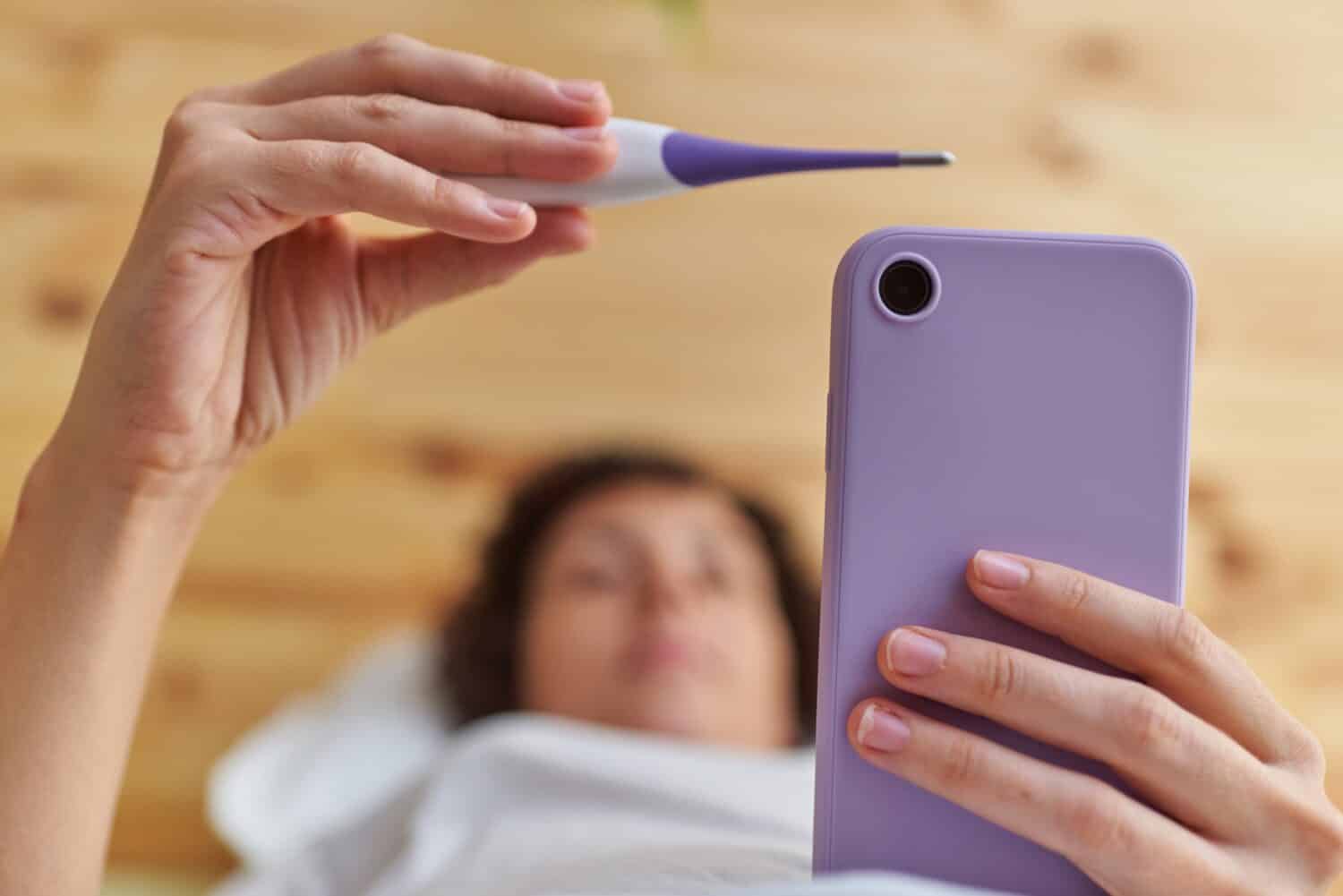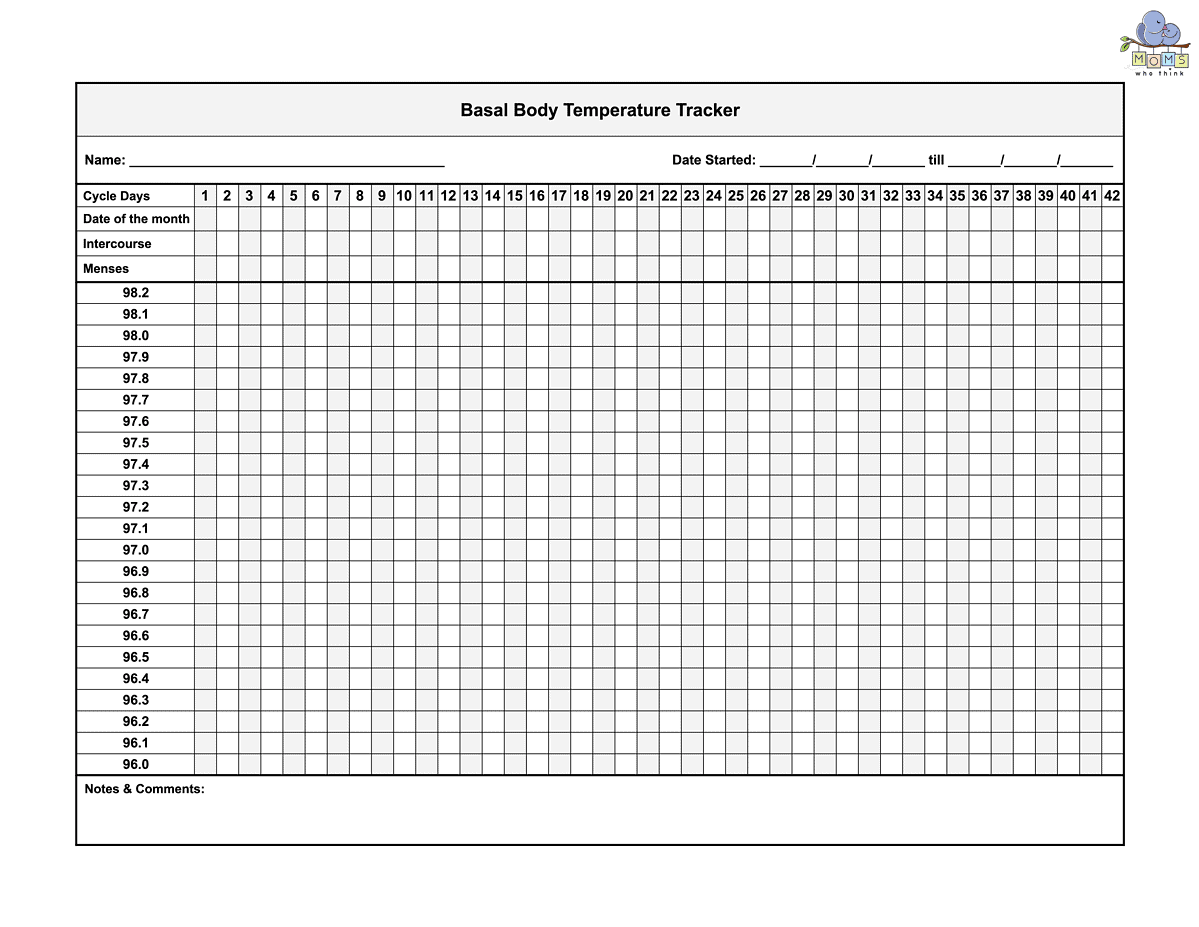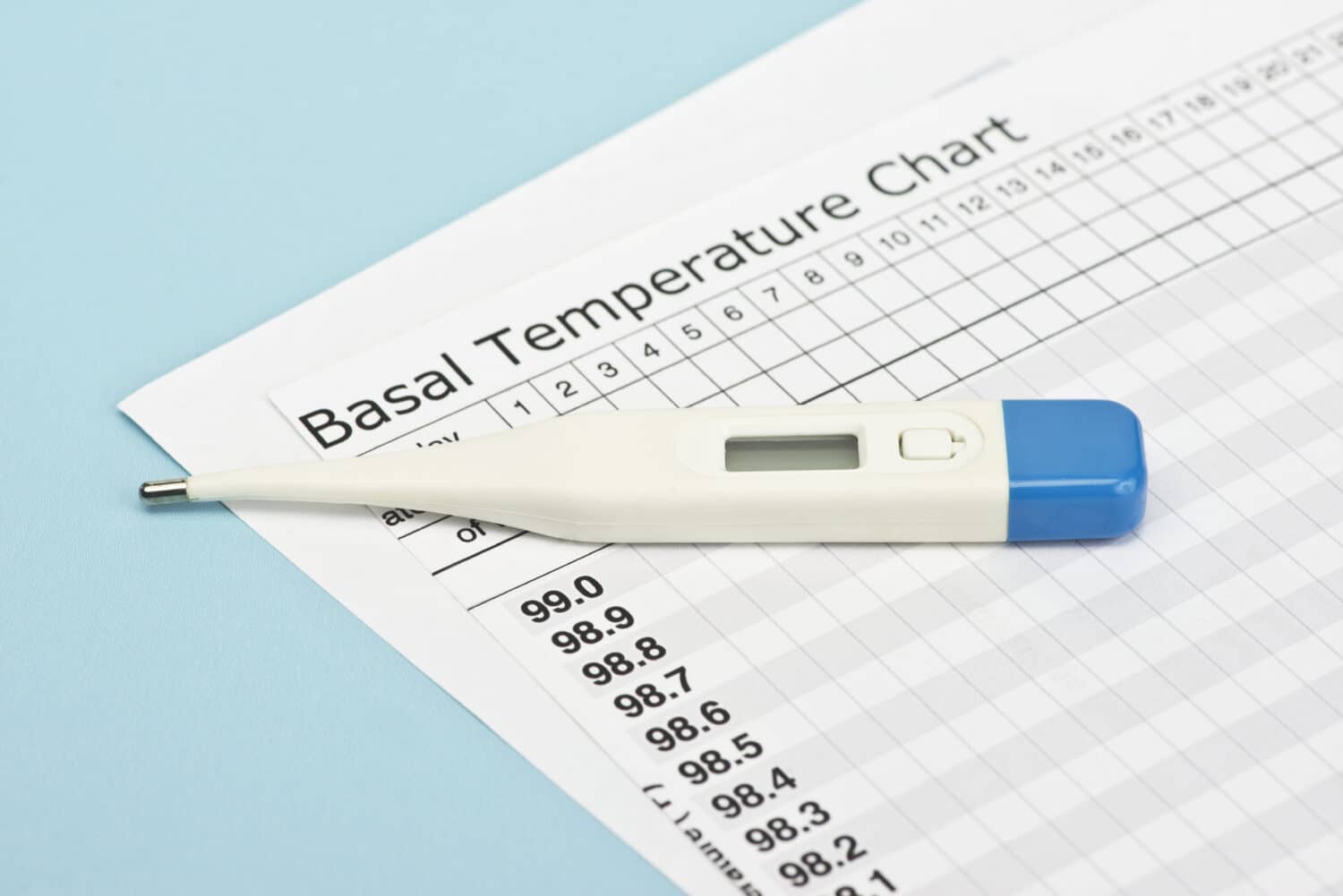If you're looking to get pregnant and are curious about how to know when you're ovulating, checking and tracking your basal body temperature is an option that some women use. According to the NIH (National Institutes of Health), the basal body temperature is the “lowest natural, non-pathologic body temperature recorded after a period of rest.”
But can knowing your basal body temperature actually help you get pregnant? And how does it play into ovulation? If you're considering using this method as part of your natural family planning or are simply curious about how it works, here's everything you need to know.
What is Basal Body Temperature (BBT)?
As mentioned, basal body temperature, or BBT, is your body's lowest natural temp after rest. Many women have begun tracking this number as a way to understand their body's tendencies. This number can also measure where they're at in their cycle and be used as a tool to see when they're ovulating.
On average, a woman's BBT before ovulation ranges from 97° F (36.1° C) to 97.5° F (36.4° C). After ovulation, this number can rise to between 97.6° F (36.4° C) and 98.6° F (37° C).
How Does Basal Body Temperature Tracking Work?
According to the American College of Obstetricians and Gynecologists, a woman's temperature increases slightly after ovulation and remains higher until the end of the menstrual cycle. Body temperatures can rise as little as half a degree to a full degree after ovulation due to the release of the hormone progesterone.
Keep in mind that tracking your BBT will only tell you when ovulation has already occurred. It doesn't tell you when you are currently ovulating. Because of this, knowing your BBT is not the perfect way to prevent or encourage pregnancy. However, tracking these numbers over time can help you see a natural cycle and trends.
Advantages of BBT Charting
While tracking your BBT is a simple process, it's also not 100% accurate. Because it only tells you when you're done ovulating, it's not as accurate as tracking ovulation in other ways (which we'll get into below). However, there are several advantages to charting your BBT if you're struggling with fertility or trying to get pregnant:
- There are no physical risks to BBT charting. You're simply taking your temperature each day and tracking it.
- It's a safe and non-invasive way to understand your cycle.
- It gives you comprehensive insight into your cycle and the way your body works.
- It can help you detect possible fertility issues, including problems with ovulation.
- It can provide information to you, your partner, and your healthcare provider when making infertility decisions.

Basal body temperature checking offers many benefits, including a safe, non-invasive way to track your cycle.
©Hassel Stock/Shutterstock.com
How to Use a BBT Chart to Detect Ovulation
As mentioned, using a BBT chart to detect ovulation is simple, straightforward, and non-invasive. But there are a few things you'll want to keep in mind when using this method.
Before you begin, you'll want to make sure you use the same thermometer throughout your tracking process. While there are thermometers that are specifically used for tracking basal body temps, you don't need anything fancy. Just be sure the thermometer you choose is accurate and reliable.
Also, should you choose to change thermometers, start using your new one on the first day of your new cycle. This helps you to see accuracy throughout an entire cycle and prevents inaccuracies in the middle of one.
When to Begin Charting
The best time to begin BBT charting is on the first day of your period. Use your chart to mark your temperature and the time you took it. Then, you can continue to track your BBT all the way through your cycle. Starting at the beginning and tracking it all the way through can help you see patterns and understand your body, including when you ovulate.
When you check your temperature, be sure to write down what it was and what time you took it. This can help you look for trends as you track over time.
Timing
When it comes to tracking your BBT, timing is everything! In order to see the best results, you should track your temperature at the same time each day. You should also check it first thing when you wake up in the morning. If you've already gotten out of bed, moved around, or even gone to the bathroom, this can change your temperature.
Additionally, it's best to check it right after you've slept for at least three to four straight hours. This shows your body's natural temperature after rest. Avoid sitting up in bed if you can, as this can alter your temp. You'll want the least amount of variables possible to help you determine an accurate number and track regular changes in your cycle.
Other Reasons Why Your Temperature May Rise
When tracking your BBT, you may find a day or two where your temperature is higher, but you haven't actually ovulated yet. When you are done ovulating, your BBT will rise by 0.5-1 degree and remain high throughout the remainder of your cycle. However, if you have a day or two where your temp is higher but doesn't stay high, it could be due to the following factors:
- Fever due to illness
- Hot weather
- Some medications
- Physical or emotional stress
- Interrupted sleep cycles or not getting enough rest
- Room temperatures
- Traveling or changes in time zones
- Other gynecological disorders like endometriosis or diseases like an overactive thyroid
Keep in mind that in order for the rise in your BBT to actually be due to ovulation, your temperature will need to rise and stay high throughout the remainder of your cycle.
How to Choose the Right BBT Chart to Use
There are many basal body temperature charts that are available for use today. Below is a free chart that you can use!

This is an example of a basal body temperature chart.
©
Additionally, you may find other apps or software that can help you track your BBT and ovulation cycles. Keep in mind that some of these options may cost money. You will also want to consider how much information you want to track, like cervical mucus changes and days you had intercourse.
BBT and Pregnancy
One common thought about BBT tracking is that it can help you determine early if you're pregnant. While, again, this method does not provide completely accurate results, it can show signs of early pregnancy.
As we've discussed, your temperature increases after ovulation due to the production of progesterone. Right before your period starts, this hormone will begin to diminish, and your BBT will go back down to what it was before your ovulation period ended. However, when you're pregnant, progesterone levels continue to remain high, signaling that your BBT will also remain elevated.
If your BBT remains elevated when your period should have already started, this can be an early sign of pregnancy. However, keep in mind that this method is, again, not completely accurate.
Other Ways to Track Ovulation
If you're tracking your BBT in an effort to get pregnant, there are other ways to track ovulation that you may find helpful as well:
- Tracking changes in your cervical mucus can tell you when or before you ovulate, while BBT only shows when you're done ovulating.
- Some companies offer ovulation kits or test strips to help you understand when you're ovulating.
- Pay attention to how you feel. If you have light cramping or spotting, this may be a sign that your body is ovulating.
- Ovulation hormones can also make you feel bloated and increase your sex drive, which are signs to look for if you're tracking ovulation periods.
Final Thoughts
While tracking your basal body temperature is not 100% accurate, it is one method you can use to better understand your body and track your cycle and ovulation patterns. This non-invasive method also works well for natural family planning and can help you understand any infertility issues you may be experiencing. While you practice BBT tracking, don't forget to take good care of yourself, too.
The image featured at the top of this post is ©MedstockPhotos/Shutterstock.com
